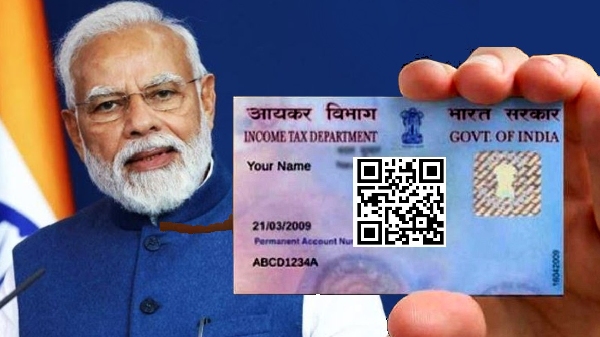The Indian government is set to transform its financial ecosystem with the launch of PAN 2.0, a major revamp of the Permanent Account Number (PAN) system. This initiative, approved by the Cabinet Committee on Economic Affairs (CCEA) with a budget of ₹1,435 crore, aims to make PAN services more accessible, secure, and eco-friendly. Beyond merely modernizing tax registration processes, PAN 2.0 is positioned as a cornerstone in advancing India’s Digital India initiative.
A Move Towards Unified Digital Governance
PAN cards, essential for taxation and a gateway to various financial services such as opening bank accounts or investing in mutual funds, are now undergoing a significant transformation. The PAN 2.0 project will consolidate all PAN-related services onto a single digital platform. This unified system will streamline both PAN and Tax Deduction and Collection Account Number (TAN) services, ensuring quicker and more accurate taxpayer registration.
A key element of this transformation is the introduction of advanced technologies, including QR codes on PAN cards for swift validation. Additionally, the revamped system will serve as a universal business identifier, enabling better integration across government agencies’ platforms. This aligns with the broader goal of creating a seamless digital ecosystem that minimizes bureaucratic inefficiencies.
Focus on Security and Sustainability
One of the standout features of PAN 2.0 is its emphasis on cybersecurity. Recognizing the growing risks of data breaches, the government will introduce a mandatory PAN data vault system. This ensures that user information remains secure while promoting transparency.
Another critical aspect is its eco-friendly approach. By adopting digital-first processes, the system will reduce paperwork, thereby minimizing environmental impact. The government has highlighted this as a key step towards achieving both economic and ecological sustainability.
Union Minister Ashwini Vaishnaw noted, “PAN card is integral to the lives of the middle class and small businesses. PAN 2.0 upgrades the existing system with a modern digital backbone, ensuring security, efficiency, and eco-conscious practices.”
What Users Can Expect
Taxpayers will experience a host of benefits under PAN 2.0:
- Streamlined Services: Faster, error-free, and more efficient access to PAN-related services.
- Enhanced Features: Introduction of QR codes for easier validation and seamless updates.
- Unified Portal: A single platform for all PAN-related needs, including grievance resolution.
- Improved Accessibility: Simplified processes for small businesses and individuals alike.
Existing PAN cards will remain valid, and users will have the option to upgrade their cards with QR codes without incurring any additional cost.
Revolutionizing Taxpayer Experience
PAN 2.0 represents a shift in how taxpayers interact with the system. The revamped infrastructure promises shorter waiting times, consistent data across platforms, and quicker grievance redressal. Adhil Shetty, CEO of BankBazaar.com, highlighted the significance of this transformation: “With PAN 2.0, managing taxes will become simpler, faster, and more secure. It’s a comprehensive overhaul aimed at elevating taxpayer convenience.”
Driving Economic Growth
The larger vision of PAN 2.0 extends beyond individual taxpayers. By establishing PAN as a universal business identifier, the initiative is expected to enhance ease of doing business in India. This will encourage investments, reduce compliance burdens, and foster greater financial inclusion.
Moreover, the project aligns with the government’s commitment to digital governance. By upgrading the IT infrastructure, PAN 2.0 will play a pivotal role in shaping a resilient and transparent financial system, furthering India’s digital transformation journey.
A Future-Ready Financial Ecosystem
The approval of PAN 2.0 underscores the government’s proactive approach to embracing technology and addressing the evolving needs of taxpayers. With its focus on transparency, security, and sustainability, PAN 2.0 is not just an upgrade—it is a paradigm shift towards a smarter, greener, and more inclusive financial future for India.




